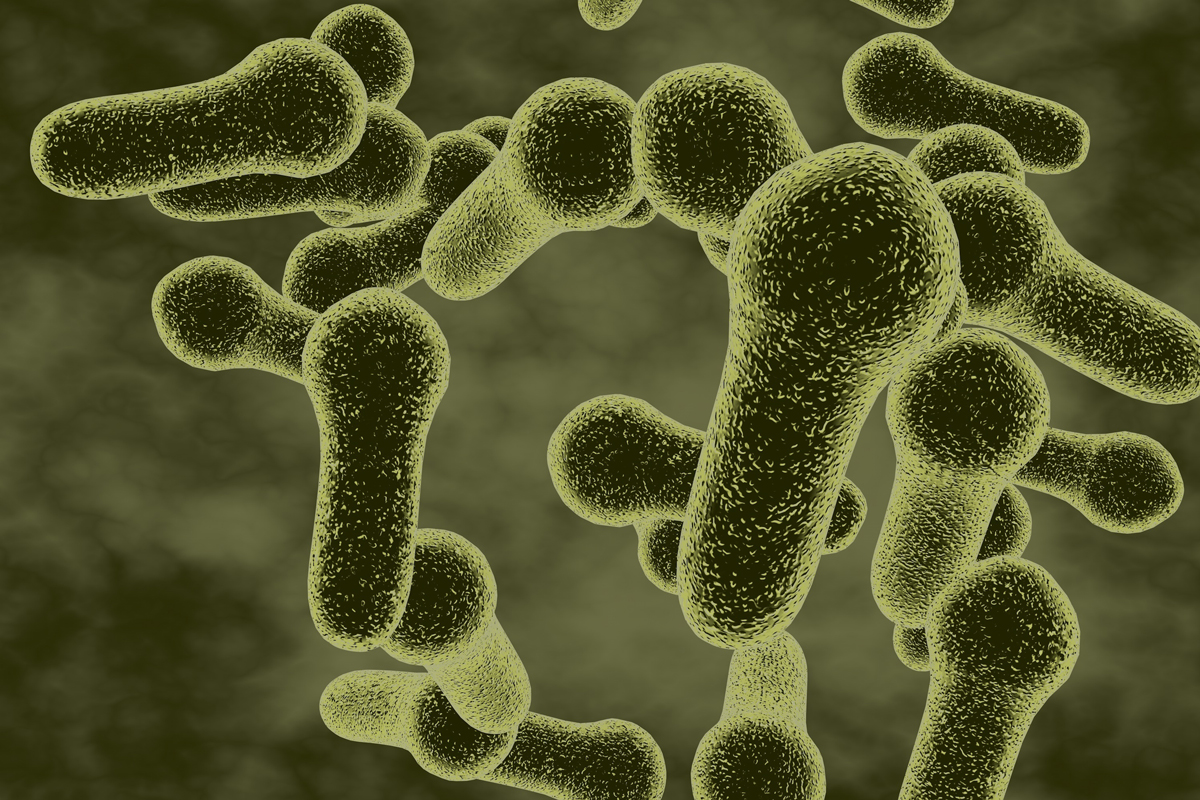Plague (Yersinia Pestis) – LE
Plague has a remarkable place in history.
It has played a role in both natural disasters and war, and it has been used as a weapon since at least medieval times. The Yersinia family consists of 11 species, where three are the well known disease plague (bubonic-, septicaemia- and pneumonic plague).
Most of nowadays cases of plague are bubonic plague, which is usually the consequence of a bite from a flea that has previously fed on a rodent infected with Y. pestis, which causes the well known “Black death”.
Plague Biological Agent Description
Plague is a disease caused by bacterium Yersinia pestis (Y. pestis). A bacterium found in rodents and their fleas in many areas around the world. Plague is found in all continents, except Oceania. Plague epidemics have occurred in Africa, Asia, and South America, but since the 1990s, most human cases have occurred in Africa. Most cases are of the bubonic form of the disease. Naturally occurring pneumonic plague is uncommon.
Bubonic plague occurs when an infected flea bites a person or when materials contaminated with Y. pestis enter through a break in a person’s skin. Pneumonic plague occurs when Y. pestis infects the lungs. This type of plague can spread from person to person through the air. Transmission can take place if someone breathes in aerosolized bacteria, which could happen in a bioterrorist attack. Septicemic plague occurs when plague bacteria multiply in the blood. It can be a complication of pneumonic or bubonic plague or it can occur by itself. Typically plague incubation time is 1 to 3 days.
Once people have the disease, the bacteria can spread to others who have close contact with them. Because of the delay between being exposed to the bacteria and becoming sick, people could travel over a large area before becoming contagious and possibly infecting others.
Yersinia pestis is unstable in aerosol for longer times, it does not form spores and it does not survive well outside the bodies of persons or animals. For these reasons, its use as Biological Agent Weapon is difficult and no one has succeeded in developing an effective aerosolised bacterium.
Plague Historical Background
Human and plague have had a relationship for over thousand years. In some estimations, the plague has killed over 200 million people. Three plague pandemics were recorded. The first was the Justinian plague in Egypt and Mediterranean Europe after 541 A.D and persisted in successive waves until the middle of the 8th century. Secondly the Black Death pandemic in Europe between year 1347 and 1351 decreased European population by up to 40%. This pandemic recurred regularly until the 19th century. The third pandemic started in 1855 in China and spreaded to India causing 12 million casualties in these countries. The Pandemic was considered to be active until 1960, when world-wide annual casualties dropped under 200.

Plague Column, a Baroque memorial for the Great Plague in Vienna, Austria. The Great Plague of Vienna brought the imperial city to its knees. Death toll estimates range wildly from a merely upsetting 12,000 to a truly devestating 75,000 people. The killer is thought to be the same Bubonic Plague (Yersinia pestis) that raged first in the 14th century, and began a second tour of duty in the 17th. All across Europe, outbreaks of disease crippled towns, but Vienna, as a trade cross-road was perfectly placed for a true epidemic.
On the right side, a representation of a plague victim.
The World Health Organization (WHO) reported 3248 plague cases from 2010 to 2015 worldwide, including 584 deaths.
Swiss physician and bacteriologist Alekxandre Yersin and Japan bacteriologist Kitasato Shibasaburō, independently discovered the Pasteurella Pestis during Hong Kong plague epidemic in 1894. Alekxandre worked in the Pasteur Institute and Kitasato in Institute for Study of Infectious Diseases in Japan. Pasteurella pestis renamed in 1967 after it founder to Yersinia pestis. A few years later in 1898, French scientist Paul-Lois Simond discovers the rat-flea as a vector that drives the disease.
Plague Usage
Plague-infected corpses have been thrown over city walls under siege to spread the disease and contaminate wells drinking water since ancient times.
Imperial Japanese Army’s Unit 731 in China Manchuria were involved in research, development and experimental deployment biowarfare weapons in assaults against the Chinese populace. The unit spread plague infected fleas by low-flying airplanes over Chinese cities in 1940 and 1941. These operations killed tens of thousands with bubonic plague epidemics.
Since 1950’s both U.S. and the Soviet Union have developed methods to aerosolise plague that could be used to induce primary pneumonic plague. Later U.S. did not continue the development plague as a potential weapon because of its persistence in the environment and the possibility of non-combatant and friendly casualties after an attack. The Soviet Union reportedly developed dry, antibiotic-resistant, environmentally stable forms of Y. pestis that could be disseminated as an aerosol. There are also concerns that multi-drug resistant strains of Yersinia pestis could be weaponised.
WHO estimated in 1970 that, in a worst-case scenario, 50 kg of aerosolized plague released over a five million people city could result in 150 000 cases of pneumonic plague and 36 000 deaths.
There are many factors that contribute to concern the use of plague as biological weapon. It is natural based and it is wide spread in epidemic area. It is found in microbe banks. Also, reports indicate that mass production techniques and aerosol dissemination have been under development. The fatal rate in untreated cases is extremely high and it is contagious from person-to-person. Even the antibiotic resistant strains exist in nature.
Plague Transmission & Dispersion
Pneumonic plague and bubonic plague are transmitted differently and their symptoms differ. Pneumonic plague can be transmitted from person to person affecting the lungs and is transmitted when a person breathes in Y. pestis particles in the air (respiratory droplets by coughing or sneezing). Yersinia pestis will be easily destroyed in sunlight and in drying. The bacterium will survive for up to one hour in the air and surfaces, depending on conditions.
Bubonic plague cannot be transmited from person to person. Bubonic plague is transmitted through the bite of an infected flea or exposure to infected material through the skin.
Plague Exposure Symptomology
Plague incubation time is between 1 to 6 days.
- Bubonic plague symptoms are the swelling of the local draining lymph glands (or bubo) usually in the groin or armpit, fever, headache, chills and weakness.
- Pneumonic plague symptoms are fever, weakness, rapidly developing breath shortness, chest pain, cough and sometimes bloody or watery sputum. Nausea, vomiting, and abdominal pain may also occur.
- Septicemic plague patients have fever, chills, prostration, abdominal pain, shock, and bleeding into skin and other organs.
Plague Treatments
Antibiotics are used for plague treatment. People who have had close contact with an infected person can greatly reduce the chance of becoming sick if they begin antibiotics treatment within 7 days of their exposure. To prevent a high risk of death, antibiotics should be given within 24 hours of the first symptoms.
There is also Yersinia pestis vaccin to prevent infections, but it not in use every country or they don’t recommend to use it.
Pneumonic plague is notoriously difficult to treat because of the speed with which the disease develops and without early treatment, pneumonic plague usually leads to respiratory failure, shock, and rapid death.
If septicaemia plague infection spreads to the bloodstream, plague is difficult to treat and often result in the colonization of the lungs.
Response & Protection Actions Against Plague
Preventive measures include informing people when zoonotic plague is present in their environment and advising them to take precautions against flea bites and not to handle animal carcasses. People should be advised to avoid direct contact with infected body fluids and tissues. When handling potentially infected patients and collecting specimens, standard precautions should apply.
Plague will probably remain viable in water from 2 to 30 days. At near freezing conditions it will remain alive from months to years. It remains also viable some times in dry sputum, flea faeces and buried bodies. It is killed in 15 minutes at 72ºC or 3 to 5 hours exposed to sunlight.
Decontamination methods are boiling, dry heat above 72ºC and disinfection solutions. For personal decontamination soap and water are effective if decontamination is needed.
Under the biological agents use the operators should use highest protection level if the situation is unknown and agents are disseminating via air, concentration might be high and there is also other vapours or splash hazards.
Did You Know?
The World Health Organization -WHO reports 1,000 to 3,000 cases of plague worldwide every year where cases are usually scattered and occur in rural to semi-rural areas.
Plague have UN 2814 number and category 6.2. for infectious substances affecting humans
Plague Fact Box
| Agent type | Bacteria |
| Infectiousness | High |
| Person-to-Person | Yes |
| Incubation period | 1-6 days |
| Infectious dose (aerosol) | 100 -500 bacterial |
| ENVI Assay Sensitivity | 105 cells/ml sample buffer |
| Lethality | Untreated 60% (bubonics), nearly 100% (pneumonic) |
| Therapy | Vaccine, antibiotics |
ENVI Assay System
Bertin Environics’ ENVI Assay System bio defence tests is the ideal tool for provisional identification of Biological threats. These high quality and proven tests for early detection are the most compact immunoassay “lab-in-a-box” in the market.

Disposable, separate assays for seven highly poisonous hazardous agents: ricin toxin, botulinum toxin, Bacillus anthracis anthrax, orthopox virus, SEB, Yersinia pestis and Francisella tularensis.

Leave a Reply